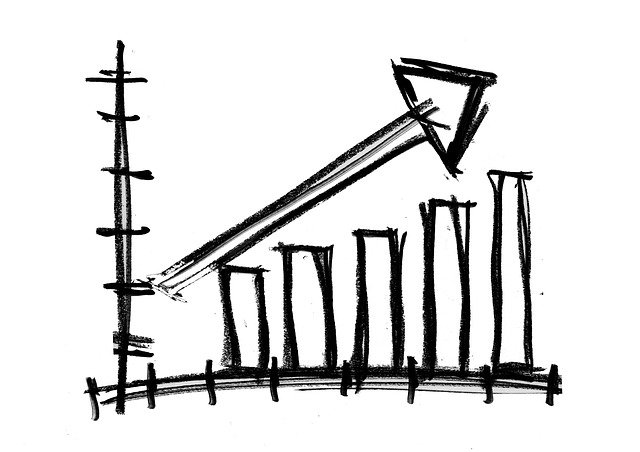Economic growth is the increase in the production of goods and services. It refers to the long-term expansion of the economy, which is measured by changes in GDP. This increase in production is an indication of a healthy economy. This growth can be measured by changes in GDP or other macroeconomic indicators like inflation rates and unemployment rates.
Factors that affect Economic Growth
There is an undeniable relationship between asset prices and economic growth. GDP growth can be influenced by swings in asset prices (e.g., commodity prices). These swings have impacted economic growth across countries and over time
There are two main reasons for economic growth to be influenced by the swings in asset prices. Firstly, the changes in asset prices affect how much people save and spend. Secondly, changes in asset prices can affect what people pay for goods and services.
Monetary policy also has implications for emerging markets and emerging market economies. It is primarily focused on the impacts of commodity prices, financial market volatility, and emerging markets on economic growth. These are the factors that affect this growth.
Worldwide Economic Growth Trends and Comparisons
In the past decade, global economic growth has been on a steady incline. The world economy has grown by an average of 3.1% per year, and the global GDP has increased by $10 trillion since 2008.
The United States is the leading contributor to global growth with a share of about 25% of the world’s total GDP in 2018. China’s share is about 20%. In terms of absolute size, China is now the second largest economy in the world, but it still trails behind the United States in per capita income levels.
There are two main types of economic growth:
• Economic growth rates – which is the percentage increase in total production during a specific period.
• Economic growth trends – which is an analysis of long-term changes in production levels over time.
Both types can be measured by looking at changes in GDP per capita, i.e., the amount of wealth generated per person living in that country, or with life expectancy as a proxy for quality of life.
Economic Growth Rate
The economic growth rate is the economic activity that keeps expanding. It is the rate at which the country’s economy expands, and it is usually measured by comparing a country’s gross domestic product (GDP) with its previous year.
The economic growth rate indicates how fast a country’s economy is growing and can be calculated by dividing the GDP of a given year by the GDP of the previous year. This number can be expressed as a percentage or as an absolute value.
Types of Economic Growth Rate
There are two types of economic growth rates: Absolute and Relative growth rates.
Relative Growth Rates measure GDP per capita in comparison to another country or region.
Absolute Growth Rates measure GDP per capita without comparison to another country or region.
Growth Rates of a Nation’s Economy and What they Mean for Your Investment Portfolio
A country’s economic growth rate can be measured by the change in GDP per capita, GDP per capita growth rates, or by the change in GDP. The growth rates are used to measure the change in a country’s GDP from one year to another.
The growth rate is not a perfect measure of a country’s economy because it does not take into account external factors like inflation and unemployment.
Economic growth rates are important for investors to analyze because they can be used to predict future trends and make appropriate investment decisions.
What Causes a Recession?
A recession can be caused by a decrease in economic activity. The causes of a recession are not always clear. It is important to understand the cause of the recession to prevent future recessions.
There are popular theories for why recessions happen, this can happen for a variety of reasons, including:
• Over-confidence in the economy
• Overspending
• Inability to pay debts
• Decrease in aggregate demand
• Increase in aggregate supply
• Increase in the price of goods and services
• Decrease in total income
How to Stimulate the Economy to Get Out of a Recession?
The economic stimulus package is a set of fiscal and monetary policies that are designed to stimulate the economy. The most common policies to stimulate the economy are tax cuts and government spending.
Tax cuts can be either temporary or permanent, but they always result in a decrease in revenue for the government. Government spending is an increase in government expenditures, which means more money is being spent than collected.
The government used tax cuts as an economic stimulus package in an attempt to get out of recession. Tax cuts are when taxes are lowered for some time by legislation or regulation, usually to promote investment or spending on goods and services.
At the same time provision is often made to have the following put in place;
• Relief for the unemployed and poor
• Recovery of business and agriculture, and
• Reform of the economic system to prevent another depression.
Conclusion
It is important to note that economic growth does not necessarily mean that everyone will be better off as a result of this expansion. Economic growth is not necessarily a good thing. It’s often associated with inflation and unemployment, which can lead to social unrest and political instability.
EDITOR’S PICK
The Ultimate Guide to Managing Inflation and How It Affects You
Interest Rates : the dangers of rising rates and how you can prepare for it
Monetary Policy: What Every Investor Ought to Know
Central Bank Explained – What is a Central Bank, Its Purpose, and How Powerful it is
Mistakes you should avoid when trading stocks



